Chinese Mainland
To keep up with globalisation and regional economic integration, while meeting the needs stemming from urbanisation and other socio-economic developments, countries all over the world are implementing a variety of infrastructure construction projects. They hope these projects will make their transportation, freight forwarding and logistics services more efficient, and improve services like energy supply, telecommunications and environmental facilities. According to the latest estimates made by the Organisation of Economic Co-operation and Development (OECD), on average about US$6.9 trillion is needed to invest annually in infrastructure projects around the globe between 2016 and 2030 to support sustainable economic development[1]. A report compiled by the Asian Development Bank says that an annual average of about US$1.7 trillion would be needed to invest in infrastructure during the same period in developing Asian countries alone, in order to satisfy the region’s huge demand for infrastructural facilities including transportation[2]. The past few years have seen a marked increase in mainland Chinese enterprises investing in or subcontracting overseas infrastructure projects under the Belt and Road Initiative. This increase is bound to fuel a rise in demand for related professional services from mainland enterprises, generating opportunities for Hong Kong service providers.
Financial Planning for Infrastructure Projects
China is not only among the world’s leading destinations for foreign direct investment (FDI), it is also its second largest source of outward direct investment (ODI). In 2016, the value of China’s ODI (US$196.1 billion) exceeded that of its inward FDI (US$134 billion). It also did so in 2015, making the country a net capital exporter for two consecutive years[3]. At the same time, the focus of China’s investment activities overseas has been gradually shifting from energy and natural resources to a diverse mix of sectors. According to figures released by the Ministry of Commerce, as at the end of 2016, the sectors which had received more than US$10 billion of ODI from China included leasing and commercial services, finance, wholesale and retail, mining, manufacturing, and information transmission/technology services, as well as infrastructure or related industries such as real estate, transportation/warehousing and postal services, construction industry, and power/heat/gas/water generation and supply. In recent years, China’s outward investment has also become more concerned with the merger and acquisition (M&A) of infrastructure projects. One example of this is the amount of investment in M&A projects involving transportation and power/heat generation and supply, which reached US$25 billion in 2016, about 19% of China’s total ODI in M&A that year.
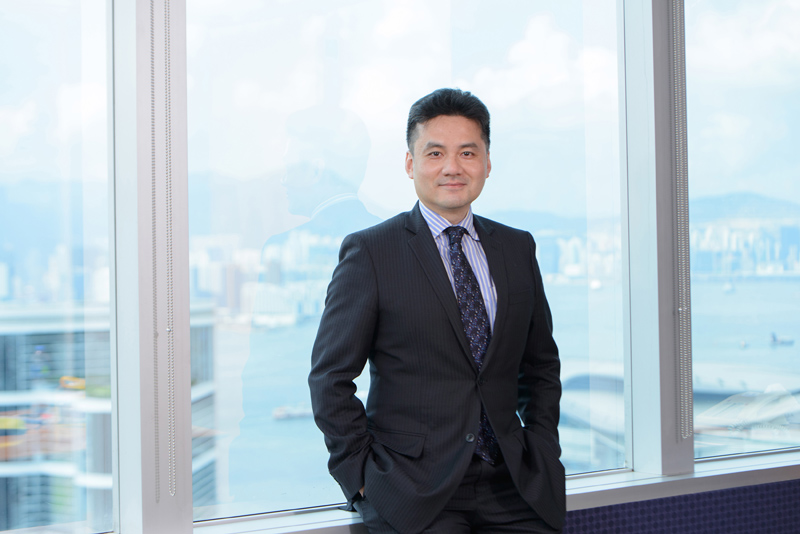
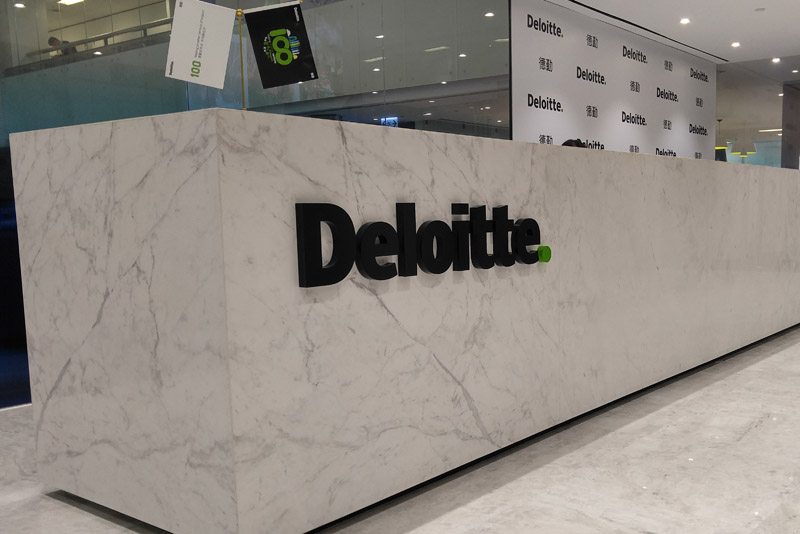
In an interview[4], Patrick W Yip, National M&A Leader and Partner (Tax & Business Advisory Services) of Deloitte China said: “Like [investment in] industries such as manufacturing or retail, investment in infrastructure projects overseas, including expressways, bridges, railways and power plants, also requires professional services such as financial, legal and accounting services, in order to ensure the sustainable development of these investment projects. However, the nature of investment in infrastructure projects is different to that in general projects, and the scope of the services required is also different. For instance, when mainland enterprises invest in M&A of technological projects overseas, the return on investment and depreciation period of the technology and equipment concerned will probably take about three years or so, whereas investment in infrastructure can easily take five or 10 years and the payback period often takes decades or more. In light of this, long-term development plans are required. The planning not only involves macro factors such as forecasts about the medium- to long-term economic and industrial growth of the country and region concerned, but also takes into consideration changes in urban development or the changing demand of facilities users as time goes by, as well as other external factors. Hence, contingency plans or measures must be formulated in the initial stage of the infrastructure investment plan in order to cope with changing environment and raise the flexibility of the investment.”
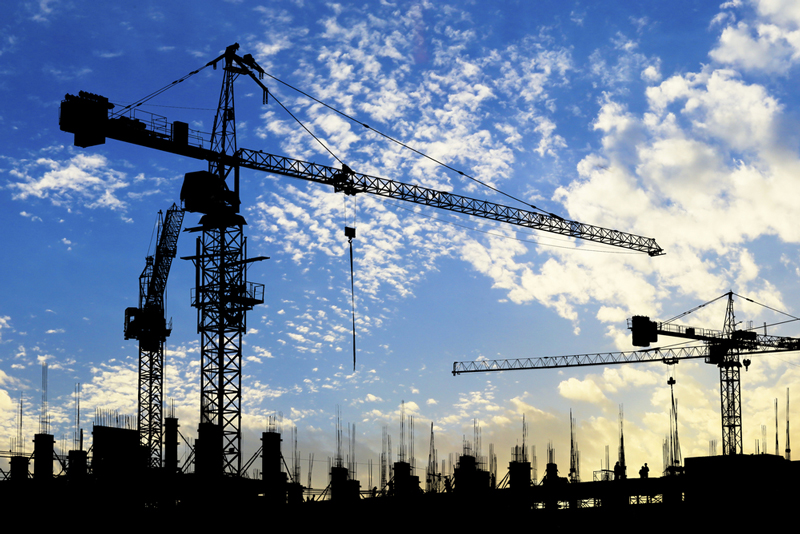
“Also, while currently most mainland enterprises are not short of capital sources, in light of the longer investment period and more uncertainty factors, the enterprises concerned would need to formulate the right financial solutions. For instance, they can take advantage of the Hong Kong service platform to bring a number of investors together in a consortium to participate in the investment projects, while utilising different channels to arrange for appropriate financing methods or syndicated loans in a bid to alleviate investment risks by increasing the number of stakeholders.”
Using Effective Networks to Conduct Due Diligence
Encouraged by the Belt and Road Initiative, mainland enterprises are increasing direct investment activities in countries along the Belt and Road. Investment in infrastructure, including roads, marine transport, aviation, energy, and communication projects, has become one of the key areas for mainland enterprises exploring Belt and Road opportunities.

However, Yip warned: “It is more important for mainland enterprises investing in infrastructure and other facilities along the Belt and Road to conduct effective due diligence, than it is when investing in developed economies. In some of the Belt and Road countries which are not popular FDI destinations, the legal systems and commercial regulations are far from advanced and their foreign investment policies may change as time goes by or with a change of government, which will directly increase the risks for investors. In fact, infrastructure projects may bring about far-reaching impacts on the economic and social development of the investment destination. Some projects may also involve land acquisition, environmental planning and environmental protection which could affect a great number of stakeholders. All these elements would have an impact on the feasibility or future development of the projects.”
“In view of this, mainland investors are in dire need of effective professional services in conducting due diligence in the initial stage of their investment plan, to identify various factors that may affect the project and thus exercise effective risk control. Hong Kong industry players, who have rich international experience and extensive international networks, can act as the service leaders to support mainland investors’ infrastructure projects overseas, co-ordinating service teams in different regions to collect the necessary information and make assessments. This, coupled with the comprehensive range of professional services available in Hong Kong, gives them an edge in carrying out effective due diligence on Belt and Road projects for clients.”
Deloitte is one of the world’s Big Four accounting firms. It provides audit and assurance, tax, management consulting, risk and financial advisory and related services for clients around the globe. Deloitte China is a member firm of Deloitte set up in China, with 21 offices across the country and a team of 13,000 professionals. Its offices in Hong Kong, Shanghai, Beijing and Chongqing are its four major operating arms. Deloitte China is also a Partner of the Infrastructure Financing Facilitation Office (IFFO) set up under the leadership of the Hong Kong Monetary Authority. IFFO aims to pool together major stakeholders to jointly promote infrastructure investment and financing activities under the Belt and Road Initiative.
Note: For details of the company interviews conducted jointly by HKTDC Research and the Shanghai Municipal Commission of Commerce, please refer to other articles in the research series on Shanghai-Hong Kong Co-operation in Capturing Belt and Road Opportunities.
[1] (1) Including the amount of investment needed to achieve climate-compatible growth; (2) Source: Investing in Climate, Investing in Growth, OECD, 2017
[2] Source: Meeting Asia’s Infrastructure Needs, Asian Development Bank, 2017
[3] Source: Statistical Bulletin of China's Outward Foreign Direct Investment 2016
[4] Representatives of HKTDC Research and Shanghai Municipal Commission of Commerce jointly conducted an interview with Deloitte China in the fourth quarter of 2017.
Editor's picks
Trending articles

Hong Kong is the third biggest financial centre in the world, behind only New York and London, with Singapore and Tokyo trailing behind. That is according to The Global Financial Centres Index 22, recently released by Z/Yen in London and the China Development Institute in Shenzhen [1]. Although Shanghai only ranks sixth on this list, it is still the leading financial centre on the Chinese mainland and has no shortage of financing channels. However, many Shanghai companies continue to carry out project financing through Hong Kong at the same time. In doing so, they hope to make use of the territory’s convenient capital movement to develop international business, and access different cost-effective resources to optimise their financing structure and sources of funds.
Making Flexible Use of Mainland and Overseas Financial Resources
Shanghai Electric Group Co Ltd (Shanghai Electric), one of the largest integrated equipment manufacturing groups in China, focuses on four major business segments: high efficiency and clean energy, new energy and environmental equipment, industrial equipment, and modern services. It is publicly listed both in Shanghai and Hong Kong. Although Hong Kong does not have an equipment manufacturing sector, Shanghai Electric runs a subsidiary in Hong Kong, hoping to use Hong Kong’s service platform to promote the development of the group.
Shanghai Electric specialises in a wide range of products, including thermal power generators, nuclear power generators, wind power generators, gas turbines, power transmission and distribution equipment, elevators, large and medium-sized electric motors, environmental protection equipment, machine tools, automation equipment and rail transportation. It has major production bases in Shanghai’s Minhang and Lingang districts. As part of its “going out” strategy and in order to make use of external resources to support its business development, the company – together with the associated Shanghai Electric (Group) Corporation – established the Shanghai Electric Hongkong Co Ltd in Hong Kong in 2001, and the Shanghai Electric Group Hongkong Co Ltd in 2010 (collectively referred to as Shanghai Electric Hongkong).
In an interview [2], Shanghai Electric Hongkong’s Executive Director and General Manager Dr. Jay Zhang explained why his company uses both Shanghai and Hong Kong to finance its projects. He said: “Financing channels on the mainland have gradually come of age. They are now capable of providing funds for mainland and even some overseas projects. In spite of this, Hong Kong with its advantage of free movement of funds and a financial market of great depth and breadth can offer businesses more financing choices. Since the Chinese mainland is not yet an integral part of the international financial market, there is bound to be some difference in financing cost between the mainland and the international market. Under the principle of market-based operation, Hong Kong can make use of different channels to source cost-effective funds. Thus, we make use of both mainland and Hong Kong platforms to raise funds for different businesses and investment projects. Actual cost-effectiveness is our primary consideration when choosing where to raise funds.”
Moving Funds Effectively for Investments Abroad
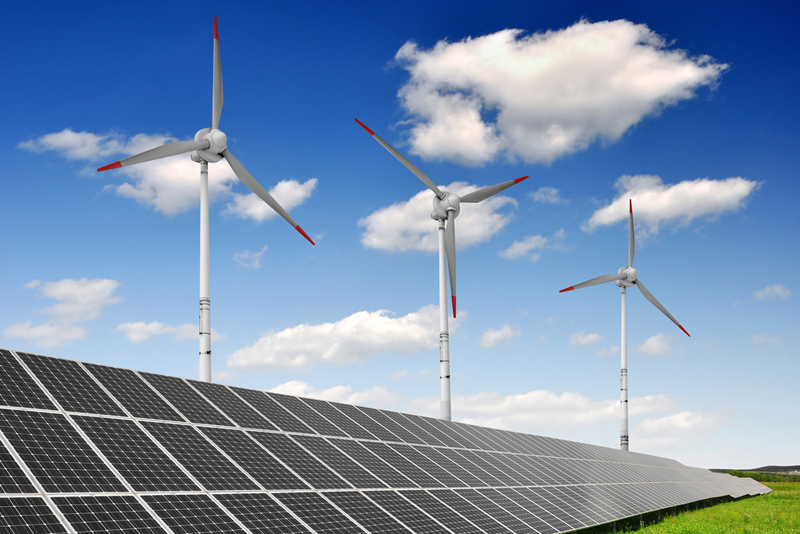
Shanghai Electric Hongkong is Shanghai Electric’s offshore platform for overseas investment and financing, capital operation and fund management. It conducts a variety of financial services in Hong Kong, including spot and forward foreign exchange transactions, foreign exchange hedging, trade financing and overseas financing. By combining the resources of the financial markets of Hong Kong and Shanghai, it hopes to promote the group’s strategy of internationalisation, developing transnational operations and upgrading its international competitiveness and brand reputation. Shanghai Electric Hongkong’s business mainly covers the following four areas: (1) offshore M&A and equity investment; (2) asset management; (3) corporate overseas treasury centre; and (4) trade business. Its registered capital amounted to HK$3.35 billion at the end of 2016.
“In addition to funds sourced locally in Hong Kong, we also raise funds from the international capital market through the Hong Kong platform for our investment projects,” said Dr. Zhang. “There is a chance that these funds may come from mainland institutions and investors. What is important about project financing is not so much the source of funds, but the convenience and cost of financing are the keys. Hong Kong is an international financial centre with the world’s largest offshore renminbi market. Through Hong Kong, we can more easily acquire cost-effective capital, including renminbi and US dollar, to increase our capital operation capability.”
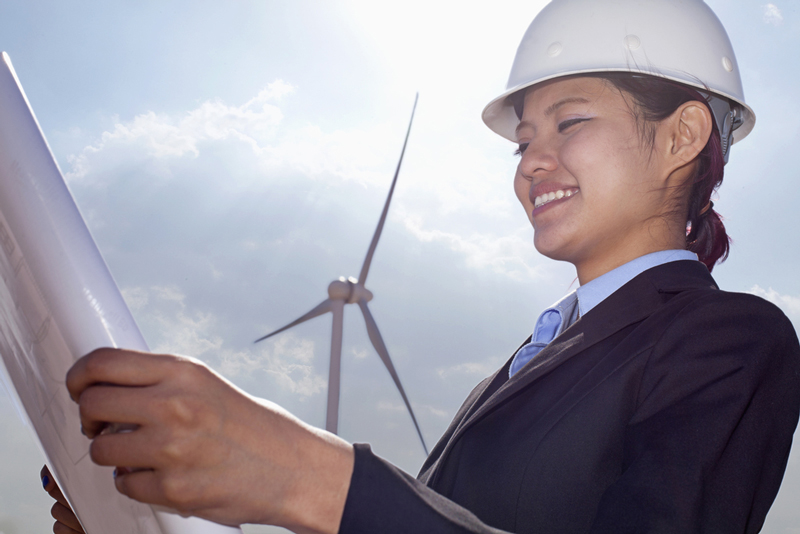
He added: “The mainland still retains considerable control over the cross-border movement of funds for international trade, overseas investments, and mergers and acquisitions, which may affect the flexibility of capital movement and increase the cost of investment and financing. Thus, we need to look for convenient overseas platforms to complement mainland financial resources in our endeavor to reduce cost and increase competitiveness.
“Hong Kong’s service platforms can help upgrade our overall financial efficiency. Its simple tax regime and convenient business environment can also contribute to the lowering of financing cost. For example, we manage our overseas investments from Hong Kong, but do not have to pay tax on profits derived from these ventures. [3] Besides, Hong Kong with its wide spectrum of accounting, legal and other professional services is an ideal service platform for our ‘going out’ strategy. They can help investors make global tax planning for international businesses and avoid unnecessary tax burdens.”
Note: For details of the company interviews conducted jointly by HKTDC Research and the Shanghai Municipal Commission of Commerce, please refer to other articles in the research series on Shanghai-Hong Kong Co-operation in Capturing Belt and Road Opportunities.
[1] Source: The Global Financial Centres Index 22, Z/Yen and China Development Institute, September 2017.
[2] Shanghai Electric Hongkong was interviewed by HKTDC Research and Shanghai Municipal Commission of Commerce in the fourth quarter of 2017.
[3] Hong Kong adopts a territorial basis for taxing profits derived from a trade, profession or business carried on in Hong Kong. Profits Tax is only charged on profits which arise in or are derived from Hong Kong. A person who carries on a business in Hong Kong but derives profits from another place is not required to pay tax in Hong Kong on these profits. For details, please refer to the website of the Inland Revenue Development at www.ird.gov.hk.
Editor's picks
Trending articles
Closer mainland-Saudi Arabia links, as well as fuel independence for southwest China, attributed to BRI.

As 2017 drew to a close, Amin Nasser, the Chief Executive of Aramco, the state-owned Saudi Arabian oil giant, confirmed that the company's discussions with PetroChina, the largest oil producer on the mainland, were now at an advanced stage. Should terms be agreed, Dhahran-headquartered Aramco will secure a 30%+ stake in PetroChina's Anning refinery. Located in the southwestern Yunnan province, the refinery – one of China's largest oil-processing facilities – came on line in October last year and currently has a throughput capacity of 260,000 barrels per day (bpd).
At present, the Anning facility solely focuses on supplying local needs. In the longer term, however, it is seen as having an intrinsic role to play in meeting China's future energy demands, with the country estimated to require at least 2.2 million bpd of refining capacity by 2022. In addition to its throughput, however, the site is also seen as having considerable strategic importance.
Set close to the Myanmar border, the refinery is in line for a key role in the Belt and Road Initiative (BRI), China's ambitious international infrastructure development and trade facilitation programme. More specifically, it is expected to help close the development gap between China's megacities and its underdeveloped eastern and western states, while improving China's "connectivity" with the rest of the world – two of the BRI's primary objectives.
The Anning facility is supplied by the Shwe oil and gas pipelines, which stretch back to the western Myanmar port of Kyaukpyu. With a total length of 770km, the pipelines – jointly funded by the China Development Bank and the Myanmar Foreign Investment Bank – source from a nearby offshore natural gas field and the regular oil shipments arriving at the port. Overall, it is hoped this new arrangement will free southwest China from its reliance on slow and costly oil shipments from the Middle East and Africa, with all of its fuel requirements, instead, offloaded in Myanmar and then piped overland.
For many in China, the Shwe pipelines are seen as among the first fruits of the BRI. From the Saudi point of view, the arrangement also has a number of clear benefits. The investment in Anning – expected to be in the region of US$1-1.5 billion – is the cornerstone of the Kingdom's game plan when it comes to regaining the market share it lost to Russia, currently China's primary supplier of crude oil.
One of the key elements in Aramco's approach has been to strategically invest in a number of target refineries, with the quid pro quo being that these installations are then contractually tied into solely (or largely, at least) processing the company's crude. In line with this, PetroChina has already tacitly acknowledged that the deal will lead to an increase in the proportion of Saudi oil processed in Anning.
The deal also paves the way for more Sino-Saudi joint ventures, while also rebooting relations between the world's biggest oil exporter and the world's largest crude importer, with Saudi Arabia clearly keen to move things along as swiftly as possible. Indeed, addressing the likely legacy of the deal, Khalid al-Falih, Saudi Arabia's Energy Minister and the Chairman of Aramco, has gone on record as saying: "Our goal is to be not only the largest crude exporter to China, but also the largest in-market investor overall."
As a further sign of colliding mutual interest, PetroChina is said to be considering buying into Aramco via its massive initial public offering – possibly the world's largest – that is expected to take place later this year. Meanwhile, for its part, Aramco is believed to be eyeing other petrocarbon assets in China. These will be in addition to its existing agreement with the China North Industries Group (Norinco), one of the mainland's leading defence contractors, to build a new refinery and a chemicals complex in northeast China. It also holds a 25% stake in a Fujian-based refinery operated by Sinopec, another of China's oil and gas giants.
Geoff de Freitas, Special Correspondent, Riyadh
Editor's picks
Trending articles
By Craig Sugden, external contributor to Lowy Institute for International Policy
China’s push for the new normal has seen its local governments convert to public-private partnerships (PPPs), long-term contracts between a private party and government to provide a public asset or service. More than 12,000 such projects worth around US$2 trillion have kicked off since public finance reforms were announced in late-2013.
China’s enthusiasm for PPPs has carried through to the Belt and Road initiative (BRI). Under the auspices of the lead planning agency, the National Development and Reform Commission, mechanisms were established in early-2017 to promote infrastructure PPPs for BRI. The promotion is to be through ‘along the way’ and ‘vicinity of the way’ mechanisms.
Others have added their support. Last month more than 130 countries and 70 international organisations, including the UN, the World Bank, and the IMF, attended the BRI Summit in Beijing. Those attending agreed on guiding principles on financing that encourage countries to open public service markets, and to develop PPPs to channel funds while improving the efficiency and quality of infrastructure.
It is easy to see why PPPs are being promoted for BRI. China’s budget is already stretched and it would struggle to directly finance the wide array of major projects envisaged under BRI. Many other participating countries also face tight budgets and PPPs are a way of mobilising alternative sources of finance.
For China, PPPs will alleviate pressure on the government with state-owned enterprises (SOEs) and state banks sharing responsibility for BRI implementation. Under the post-2013 reforms, the government is relying more on the social capital sector, which in China includes state-owned entities and the private sector. Reforms have opened public services to competition and eroded the widespread practice of simply allocating public projects to local SOEs.
But such an active role for these state-owned entities may raise concerns outside China. What will China Inc. hold for BRI countries?
China’s own State Council has expressed concern in its mix of SOEs and PPPs. There were calls last year for better protection of investor rights so the private sector can participate in fair competition with SOEs. There are other features of China’s PPPs to be wary of. Last month, central government agencies had to clamp down on local government's using PPPs as a means of backdoor borrowing. China’s PPPs tend to be relationship-heavy. Key issues - such as the pricing of services - are often not tightly defined up front in the contract process but left to be resolved by partners during implementation. Mixing a relationship-heavy approach to PPPs with the weak governance that is found in some BRI countries would carry obvious risks.
Yet China’s reforms have seen international practices adopted and adapted to fit the institutional setting. These changes were achieved with the help of the UK, where many good PPP practices originated, and international organisations like the World Bank. If Chinese entities work offshore the way they are meant to work onshore, many BRI countries could benefit from better infrastructure.
These observations lead to the identification of a potential role for Australia in BRI focused on PPPs.
Australia is one of the countries that has not signed onto the BRI, along with India, whose government stayed away from the May BRI forum, and Japan and the US, who are not mentioned in the forum’s communique. Australia is also not mentioned in the communique. The highest profile Australian contribution to the forum was a speech by former prime minister Kevin Rudd. Should Australia continue to keep its distance, or engage, as its neighbours Indonesia, New Zealand, and the Fiji Islands have done?
Views are divided. As is the case with many other issues involving China, opinion on BRI is torn between apprehension regarding China’s leading role and appreciation of the huge business opportunities on offer.
What is clear, however, is that PPPs can provide a natural niche for Australia. Australia can contribute to BRI by helping ensure that PPPs live up to their potential to deliver higher quality and lower cost services faster. By promoting good PPP practices, Australia can help avoid a free-for-all of unconstrained strategic or commercial interests.
Australia has one of the world’s best resumes on PPPs. It's a leader in delivering infrastructure and other public services through PPPs, with an enabling environment that defines good practice benchmarks. It has many skilled, experienced service providers, financiers, and advisors that can generate value for money through innovation.
Australia's aid program has helped other countries learn from the Australian experience. Much more can be done though to share Australia’s PPP knowledge of and resources in PPPs which may provide an alternative way of delivering essential public services that developing countries badly need.
The need for development partners to prioritise private sector solutions when deploying scarce public resources, including for infrastructure, was highlighted at the recent World Bank/International Monetary Fund Spring meeting. It is widely accepted that the post-2015 Sustainable Development Goals can only be met if private investment plays a bigger role in development.
Raising Australia’s presence in offshore PPPs would be in the national interest in that it would provide an outlet for particular skills and management practices, and provide new opportunities for Australian capital seeking the long-term investment offered by infrastructure.
If Australian service providers, financiers, and advisors win BRI projects, they will export good PPP practices. Project-level activity can be backed up by knowledge sharing with advocacy on how to do PPPs well. Australia can, for example, play a part in encouraging transparency in BRI projects including open competitive bidding.
Specialised investment funds have been set up by China, such as the Silk Road Fund, with billions of dollars in resources. The World Bank and the Asian Infrastructure Investment Bank are engaged in BRI, along with many other international organisations. So, the potential partners for Australian organisations are in place. Conditions are ready for Australia to take on a thought-leader role.
Australia took a bold step when it joined the Asia Infrastructure Investment Bank without the United States. It could now take another pragmatic step by assertively promoting good PPPs, using BRI as a platform.
The qualifier ‘good’ is an important one. Every country that is serious about PPPs has had some bad outcomes, such as projects that didn’t deliver the promised services, that strained the government’s budget, that cost investors dearly, or earned excessive profits. PPPs, just like conventionally delivered projects, can fail. Those who have been down this road before are well-placed to help others avoid the pitfalls.
Please click to read the full report.
Editor's picks
Trending articles
By Charlotte Middlehurst, China-Britain Business Council
Swapping souks for solar plants and camel caravans for wind farms, the Silk Road is undergoing a makeover. President Xi Jinping’s plan to revive the old Silk Road through a US$4 trillion programme of trade deals and infrastructure investment has attracted the eye of green enterprises that see a golden opportunity to win contracts and gain valuable experience in overseas markets.
First unveiled in 2013, the Belt and Road Initiative (BRI) is China’s most ambitious overseas investment project yet. Stretching over 60 countries across Asia, Africa, Latin America and Europe, it aims to develop industrial agriculture and core infrastructure such as ports, container terminals, railways, roads, power plants, and factories.
It is key both to China’s “going out” strategy and to “globalization 2.0”, President Xi’s vision to reboot and rebalance international trade relationships with Asia at the helm.
Over 900 BRI deals have been slated so far with projects ranging from lithium mines to hydroelectric dams. But beyond the “win-win” rhetoric there is international concern about a lack of transparency around certain projects and the access granted to foreign companies.
Additionally, there is concern that China will offload its excess industrial assets, as domestic demand slackens and overcapacity in the coal, cement, and steel sectors grows.
However, there is an alternate path available that speaks to a broader global movement towards sustainability – one that is paved with green investment.
China’s push for global leadership of the green tech and energy markets has been aided by US President Trump, whose personal disinterest in renewables and fondness for coal has left the vacancy open. In the current Five-Year Plan, China has made sustainable development and environmental restoration pillar industries and set aggressive targets to reduce pollution and increase the share of electricity derived from renewables (15 percent by 2020).
Focus on efficiency, domestic consumption and green technology has led to big investment in solar and wind power, “smart” grids, electric vehicles and battery storage. Leading companies, with the encouragement of central government, are therefore eager to enter the newly available foreign markets under the umbrella of BRI.
So how can China “green” the new Silk Road?
In three ways. First, by encouraging companies to introduce sustainable design into their projects and adopting sustainability criteria in their decision-making. Second, by focusing on investment in solar, wind and hydropower at a time when most countries are shifting away from coal and oil in accordance with the Paris Climate Agreement. Third, by galvanising the financial sector, upon which it is incumbent to steer investors away from environmentally harmful projects.
Green enterprise on the rise
China invested a record US$32 billion in overseas renewable energy and related technologies last year, marking a 60 percent year-on-year increase in spending, according to the research group Institute for Energy Economics and Financial Analysis (IEEFA).
For China’s environmental tech companies, the BRI is a chance to secure lucrative contracts and broaden their experience and expertise of working in internationally regulated foreign markets.
“If environmental enterprises don’t venture into the wider international market and work hard to gain experience there, their capabilities will not improve, and they will find it difficult to meet global market requirements,” says Luo Jianhua, secretary general of the China Environment Chamber of Commerce.
With this in mind, Premier Li Keqiang, speaking at last year’s National People’s Congress, reasserted that Chinese environmental enterprises will benefit from new investment contracts made through the BRI.
This was followed up by a comment from Luo Jianhua that Chinese enterprises, in particular mineral and chemical companies, should seek to emulate international best practice, pointing as an example to German chemical giant BASF SE which co-opts water treatment and sustainable design into its projects.
While energy is a key focus, China is pushing into related markets, such as green data monitoring. The country has seen a six-fold increase of sales in monitoring equipment between 2006 and 2015, paving the way for new alliances with Europe.
Renewable energy
China is expected to install around a third of the world’s total wind energy, solar and hydroelectric generation capacity by 2021. A proportion of this will go into decentralised wind, solar and micro grid solutions along the BRI route. In some cases, this will be in countries that are being sidelined by national governments and traditional donors such as the World Bank.
In Myanmar, where only 34 percent of people have access to electricity through the grid, falling to 16 percent in rural areas, China is working on local initiatives to provide solar energy to households. In Thank Bayar Khond, a few kilometres outside of Yangon, the Chinese NGO Global Environment Institute has teamed up with Myanmar NGOs and the Blue Moon Foundation to provide small household solar panels and clean cook stoves to families in the village.
In Mongolia, China's efforts to fight desertification, or soil loss, has been touted by United Nations deputy secretary-general Erik Solheim as a model for other regions ravaged by sand and dust in Africa, the Middle East and Latin America.
In Pakistan, China has been pursuing green investments opportunities from solar and hydropower projects to vast rail networks.
However, China must go further to repair the reputational damage caused by environmentally and politically harmful projects such as Myanmar’s Myitsone dam, which has since been halted, and its controversial road building in Pakistan’s disputed border region.
To improve this, a group of Chinese and foreign non-governmental organisations have committed to helping China develop guidelines under the umbrella of the China Green Leadership: Belt and Road Green Development project.
Finance gets on board
The BRI is an opportunity to scale-up green finance and coordinate international lending institutions to hasten the uptake of environmental risk into loan decisions.
During the Hangzhou G20 summit in August 2016, China championed green finance and has since demonstrated its commitment as the largest issuer of green bonds in 2016. Meanwhile, the China-led Asia Infrastructure Investment Bank, a key supplier of BRI investment, has stated a commitment to ensuring its projects are “lean, clean and green".
In the past, China’s overseas investments have courted controversy for their environmental impacts, particularly in the resources sector, such as mining or hydropower. Through the New Silk Road, China has the opportunity, brought about by globalisation, to improve the capabilities of its environmental enterprises. Companies who do this efficiently stand to be big winners.
This article was first published in China-Britain Business FOCUS. Please click to read the full report.
Editor's picks
Trending articles
Thawing China-Philippines relations sees Beijing sign up as backer for country's ambitious infrastructure makeover.
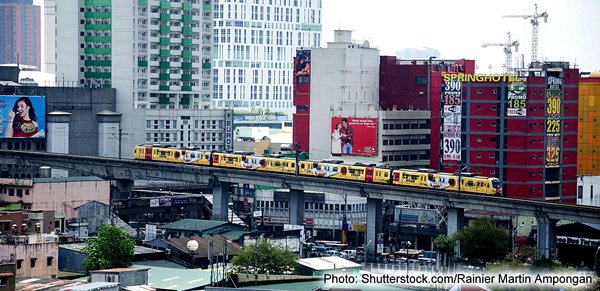
A proposed 610km railway line – linking Manila, the Philippine capital, to Matnog, a town to the south of the country and the site of a new 50-hectare eco-city – is set to be the latest beneficiary of Belt and Road Initiative (BRI) investment. Following detailed negotiations during last November's ASEAN summit in Manila, the final loan agreement is expected to be ratified early this year, almost exactly 12 months from the date that initial discussions began.
The origins of the scheme, formally known as the Philippine National Railways (PNR) South Long Haul Project, date back to 2015, when it was first mooted by the Bicol Regional Development Council, the trans-provincial body responsible for the region's economic regeneration. It was subsequently adopted as one of the flagship projects of the Build, Build, Build initiative, the massive infrastructure development programme initiated by Rodrigo Duterte, the Philippine's controversial President. It is believed that Duterte is committed to seeing the project completed before the end of his term in office in the summer of 2022.
Once completed, the massive P151 billion (US$3.01 billion) rail initiative will run south from Manila to Matnog, connecting the provinces of Sorsogon, Laguna, Batangas, Quezon, Camarines Sur and Albay along the way, as well as a number of international seaports and Special Economic Zones. It is also envisaged that it will vastly improve connectivity between Southern Luzon's urban centres and several regional growth hubs, ultimately enhancing productivity in the industrial, services and agricultural sectors.
As an added bonus, it is also expected to boost tourism within the Bicol region by as much as 30%, while carrying up to 400,000 passengers in its first year of operation. In total, it will cut the transit time between Manila and Bicol from 11 hours to just six.
The huge cost of the project is largely down to the need to replace the legacy PNR track with, in the first instance, a single-track at-grade (at the same level) rail system. According to the country's Department of Transportation, in addition to the costs of replacing the track, the project's budget will also extend to the provision of new carriages/engines and a number of other supplementary requirements. On top of the Chinese investment, between P800 million and P7 billion of funding has been allocated to the project from the Philippine government's 2016 and 2017 budgets, with a further P3 billion expected to be diverted from the 2018 public spending round.
In addition to the South Long Haul project, the Philippines' government has also approved two other major rail projects over the past 12 months – the P358 billion Metro Manila Subway and the P134 billion PNR-South Commuter Line. It is envisaged that, ultimately, these three projects will segue into one integrated commuter rail system.
Overall, the confirmation of the mainland funding is seen as yet another sign that relations between China and the Philippines are continuing to thaw. A consequence of this improved diplomatic relationship is that Duterte can now rely on BRI funding to help bankroll many of his administration's priority economic redevelopment and job-creation initiatives, which have been costed at about US$167 billion. To date, China has pledged US$24 billion in order to help realise these proposals.
Marilyn Balcita, Special Correspondent, Manila
Editor's picks
Trending articles
Transformative East Coast Rail Link secures mainland investment, enhancing connections to China-funded port.
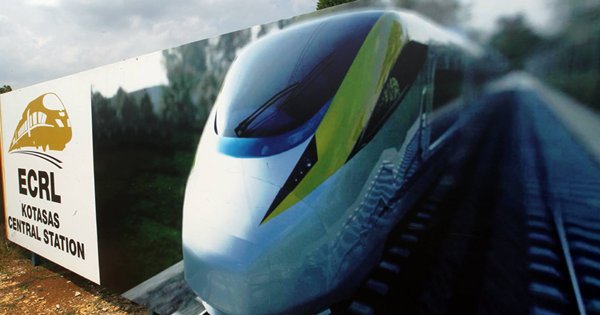
Work is set to begin on two of Malaysia's most ambitious infrastructure development projects – the construction of the East Coast Rail Link (ECRL) and a major upgrade to the Kuantan Deepwater Port. Both projects are being bankrolled by Chinese investment, with their development managed by two mainland-led consortiums, a sure sign that Beijing sees the programmes as an integral part of the Belt and Road Initiative (BRI), China's ambitious infrastructure and trade facilitation programme.
The ERCL is one of the key planks in Malaysia's bid to economically rejuvenate its eastern region. With a proposed budget of some RM55 billion (US$13 billion), the 700km rail line is being constructed by the China Communications Construction Company (CCCC), the state-owned infrastructure development giant, and is expected to be operational by July 2024.
Fully-electrified, the oxbow-shaped line will be built in two phases, ultimately connecting Port Klang on the west coast, the country's largest container port, with Kuala Lumpur, the Malaysian capital, while also servicing several urban centres and ports along the eastern seaboard. Its northernmost terminal will be Pengkalan Kubor, a strategically significant town on the Thai-Malaysia border. The line will carry both a 160 kph passenger service and a more sedate 80kph freight service.
With 15 viaducts and 10 tunnels – the longest being 5.6km in length – 70% of the ECRL's capacity will be given over to freight services, with a throughput of more than 54 million tonnes of cargo anticipated by 2030. The remaining 30% will be allocated to the 5.4 million passengers expected to travel the route every year, making it the country's primary inter-regional transport system.
The initial 600.3km phase of the project will run from the Gombak Integrated Transport Terminal in the state of Selangor to Kota Bharu, the capital of the north-eastern state of Kelantan. With 21 stops along the way, it will connect Kota Sas, Kuantan Port, Cherating, Kertih Port, Kertih Airport and Kuala Terengganu, the largest city on the east coast. The second phase will deliver two extension lines – a 24.5km northern link running from Kota Bharu to Pengkalan Kubor and a 78.6km southern spur connecting Gombak and Port Klang.
In total, 85% of the funding for the project has been provided by the Export-Import Bank of China (EximBank) with the loan repayable at a rate of 3.25%. The remaining 15% has been sourced via Malaysia's sukuk Islamic bond scheme, an initiative managed by three of the country's domestic banks.
Overall, developing the country's rail infrastructure has been designated as a priority by the Malaysian government and forms a key component of its economic transformation plan. This focuses on providing enhanced links between the country's eastern and western seaboard ports, while reducing the development gap between the west coast and the country's less-industrialised eastern states.
It also seeks to remedy one of the country's most pressing infrastructure shortcomings. With the majority of Malaysia's inter-city rail lines running on a north-south axis, many of the towns, cities, ports and industrial zones in the country's eastern region have long been left solely reliant on road links. It is now hoped that the huge investment planned for the rail sector will bring it up to the standard of the country's existing port, air and road networks.
Once completed, the ECRL is expected to jumpstart economic activity in the East Coast Economic Region, which extends across 51% of Peninsular Malaysia and is home to some five million people. It is hoped the new line will boost the region's per annum GDP by 1.5% annually for the next 50 years.
Aside the from the economy of eastern Malaysia, the other key beneficiary of the ECRL is expected to be Kuantan, the state capital of Pahang and the site of the country's most significant east coast port. The port, which offers strategic access to the South China Sea, is currently undergoing a major upgrade. This will double its capacity to 52 million freight weight tonnes (FWT) and allow the largest container ships to berth.
The first phase of the work on the port's new deep-water terminal is expected to be completed by the summer of this year, with phase two scheduled to go online in 2019. Already one of the country's prime conduits for imported goods and raw materials for industrial production and manufacturing, the expanded facility is also expected to handle a greater throughput of imported oil and gas.
The redevelopment work on the port is being headed by the Kuantan Port Consortium, a joint venture between IJM Corporation Berhad, one of Malaysia's leading construction groups, and Beibu Gulf Holding (Hong Kong), a subsidiary of the Guangxi Beibu Gulf International Port Group, one of China's largest port development and management specialists. At present, ownership of the consortium is split on a 60:40 basis in favour of IJM, with the Malaysian government also having a special rights share.
One of the key beneficiaries of the port's redevelopment will be the nearby China-Kuantan Industrial Park, the first Special Economic Zone to be jointly developed by Malaysia and China. At present, the park primarily focuses on power generation, energy-saving initiatives, environmentally-friendly technology, high-end equipment and the manufacturing of advanced materials.
Geoff de Freitas, Special Correspondent, Kuala Lumpur
Editor's picks
Trending articles
Mainland-backed fund earmarks US$20 billion investment for 17,000km distant Belt and Road Initiative projects.
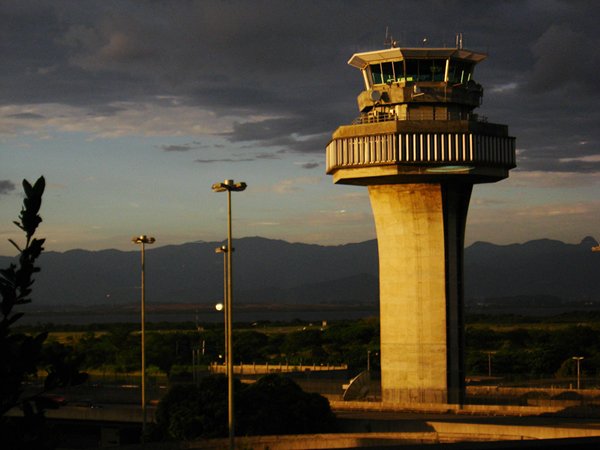
In total, China has now invested more than US$117 billion in Brazil, according to the Brazilian Ministry of Planning. A significant proportion of this funding has been targeted at three particular sectors – energy, mining and agribusiness – that together account for some 45% of all mainland-sourced FDI. More recently, China has also begun to up its commitments in the country's infrastructure redevelopment sector, in line with Brazil's status as one of the proposed endpoints of the Belt and Road Initiative (BRI).
For 2018, it is expected that the level of Chinese investment in Brazil, a country seen as having one of the most robust economies in Latin America, will rise still further. As a clear indication of this, the Brazil-China Productive Capacity Expansion Fund (BCPCEF), a joint infrastructure investment facility established by the two countries in March 2017, currently has $20 billion in funding earmarked for projects deemed to be mutually beneficial.
In line with the initial agreement, China will contribute $3 for every $1 sourced from Brazil's own financial sector, with the China Latin American Industrial Cooperation Investment Fund (Claifund), the Brazilian Development Bank (BNDES) and Caixa Economica Federal, Brazil's federal savings bank, having signed up as supporters of the initiative. Among the sectors already designated as BCPCEF priorities are logistics, infrastructure, energy/mineral resources, high-tech manufacturing, agribusiness and the digital economy.
Jorge Arcbache, the Secretary of International Affairs at Brazil's Ministry of Planning, is seen as one of the prime movers in this new chapter of China-Brazil economic co-operation. Addressing both the motivation behind this new partnership and the opportunities likely to emerge, he said: "China is no longer solely concerned with raising its export levels or capitalising on the surplus capacity of its production facilities.
"Instead, it is looking to scale its activities up and to establish sustainable business partnerships across the world. This is not just in terms of manufacturing, but also with regards to the supply of services and the sharing of technical expertise.
"There is already a 100 year-long history of China-Brazil co-operation, a legacy that has given both parties a clear understanding of each other's economic realities and trade priorities. Beginning in 2009, this century-old connection has evolved into a new relationship, with China now one of Brazil's key sources of overseas investment."
In 2017, this relationship saw China emerge as one of the principal backers of a number of Brazil's infrastructure development projects. Among the most high-profile of these was the development of the Paranagua Water Terminal, the construction of the Sao Simao Hydroelectric Facility and a major upgrade to the Tom Jobim International Airport, Rio de Janeiro's principal air terminal.
Marina Barros, Sao Paulo Consultant
Editor's picks
Trending articles
Hong Kong’s historic Peak Tram and The Peninsula are iconic landmarks for visitors while the Belt and Road Initiative provides long-term opportunities for their owner, The Hongkong and Shanghai Hotels. CEO Clement Kwok says the key to success is the company’s focus on people-to-people relationships.
Speakers:
Clement Kwok, CEO The Hongkong and Shanghai Hotels
Kim Wedderburn, Lawyer, IT sector
Antonia Theresa Rodriguez, Chief Order Taker, Room Services, The Peninsula Hong Kong
Henry Ho, Guest Relations Executive, The Peninsula Hong Kong
Related Links:
Hong Kong Trade Development Council
http://www.hktdc.com
HKTDC Belt and Road Portal
http://beltandroad.hktdc.com/en/



Prosper Construction Holdings, a Hong Kong-based contractor specializing in marine construction services, has an established track record in marine infrastructure developments at home and abroad.
Established in 2001, Prosper Construction owns over 50 marine plants and vessels, including floating jetties, a floating batching plant, a wide range of barges and dredging equipment, and a diversity of land construction equipment such as cranes and earth-moving machines. It also operates its own crew and technicians. All these give the company an edge when bidding for projects and enables it to ensure high project quality and good time control. This strength in resources has also helped Prosper Construction win a variety of marine infrastructure projects in regions or countries along the Belt and Road route. A good number of the projects are located in Indonesia, Southeast Asia’s largest economy which has the region’s greatest need for new infrastructure.
A high-profile project that Prosper Construction completed recently through its subsidiaries, Hong Kong River Engineering Co. and PT Indonesia River Engineering Co., is a coal-fired power plant in Bali.
Located in Celukan Bawang, North Bali, the plant was built with an investment of US$700 million by China Huadian Group, one of the five largest state-owned power generation enterprises in China, as well as PT Merryline International, and PT General Energy Indonesia. It consists of three units, each carrying a capacity of 142 megawatt units and using efficient, clean coal technology.
Over the past decade, Bali the island has been depending heavily on electricity supplied by Java-based power plants. Demand for electricity on the island has been on the rise, and frequent blackouts have hampered local businesses and investments. The establishment of the plant is expected to help the island enjoy more stable power supply.
Prosper Construction was responsible for constructing the jetty, revetments and seawater intake pipeline. The company’s Hong Kong team was behind the scenes, drafting the tender proposal in the early stage and liaising with consultants.
There were considerable challenges in executing the project, including local shortage of building materials and strong wind and fierce waves in the area where the plant is located. Yet Prosper Construction managed to pull through by ensuring its technicians upheld the safety standards and by sourcing materials from China.
The project is an example of how a resourceful Hong Kong company can readily employ what it has to support Chinese investors to go abroad and help build infrastructure projects that benefit Belt and Road countries.



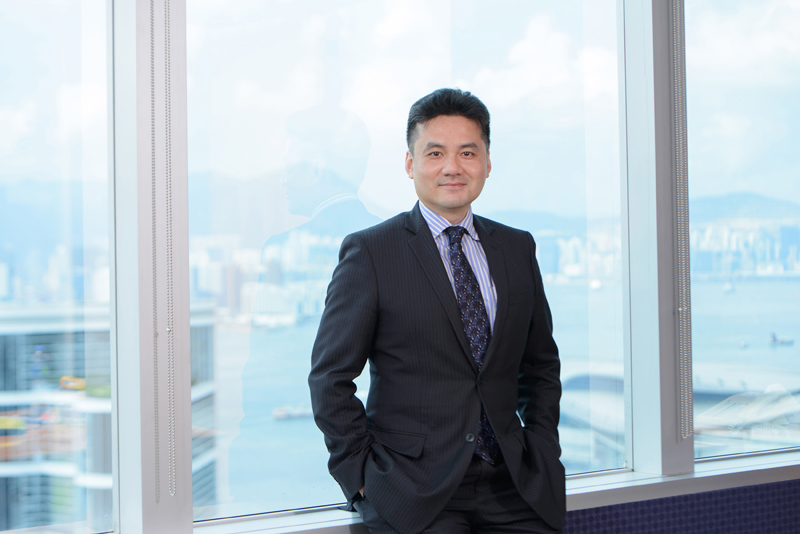
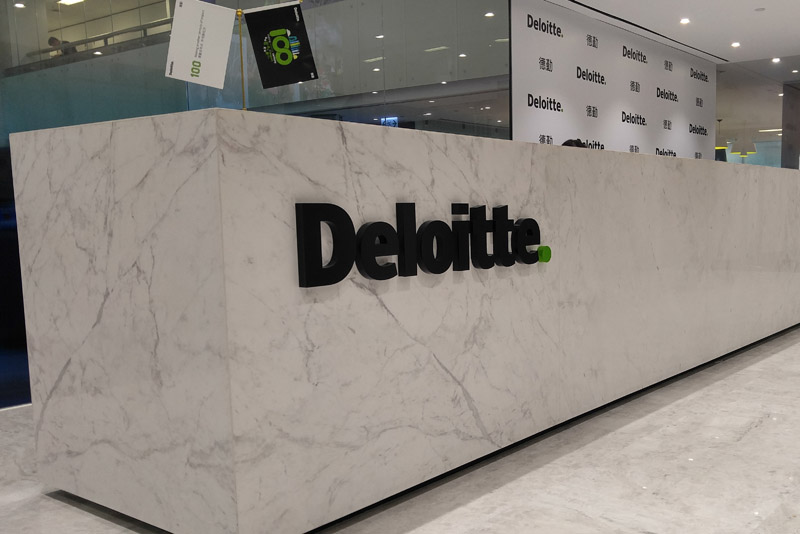
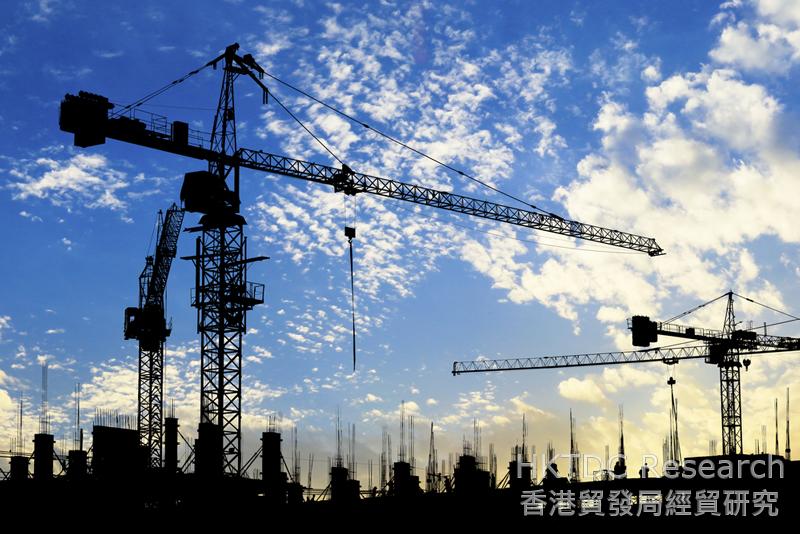
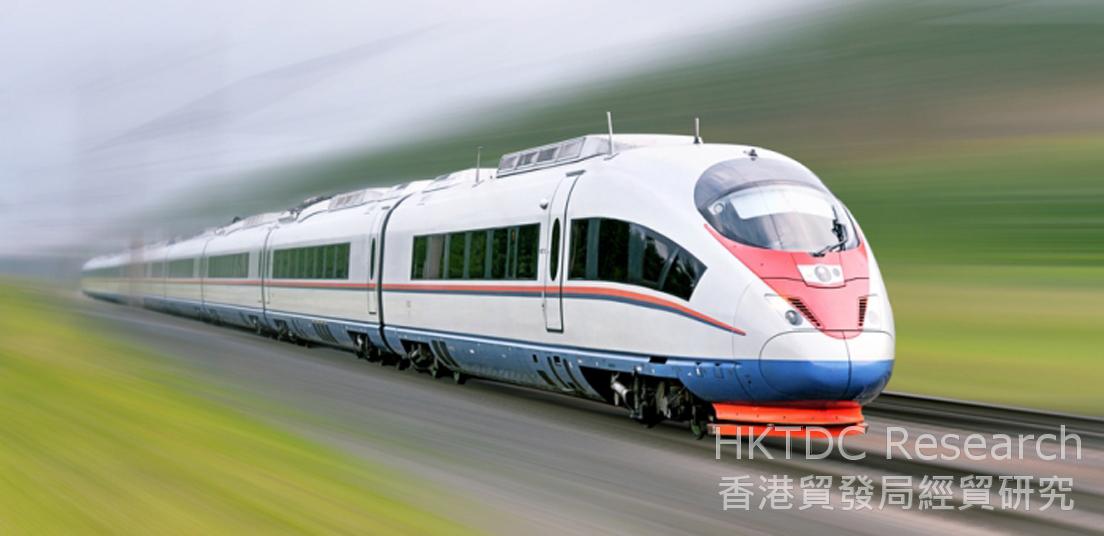

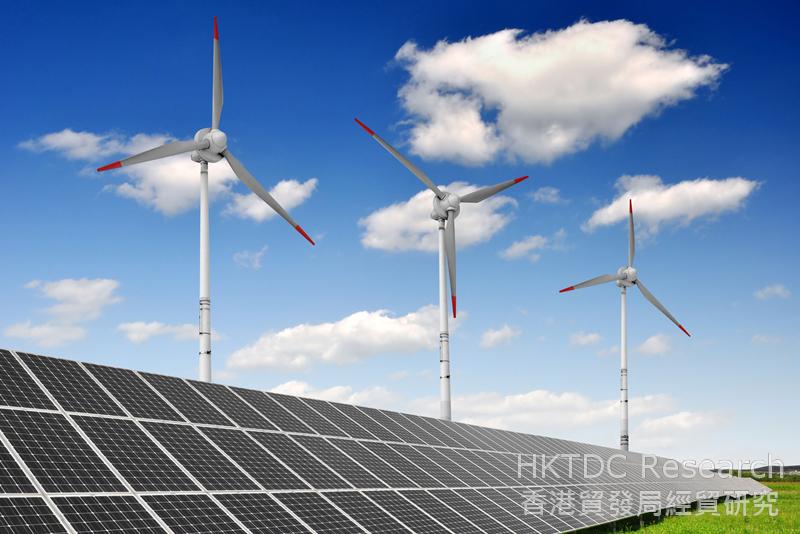
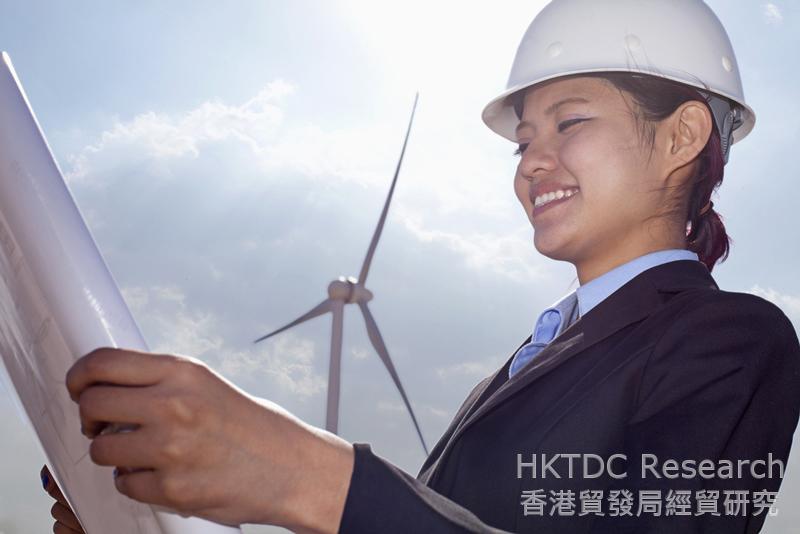

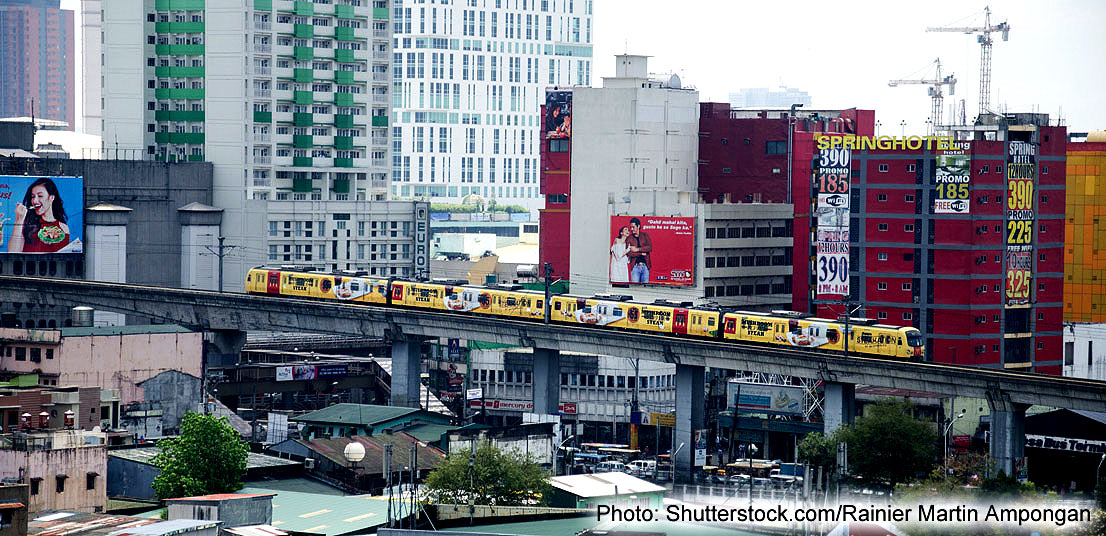
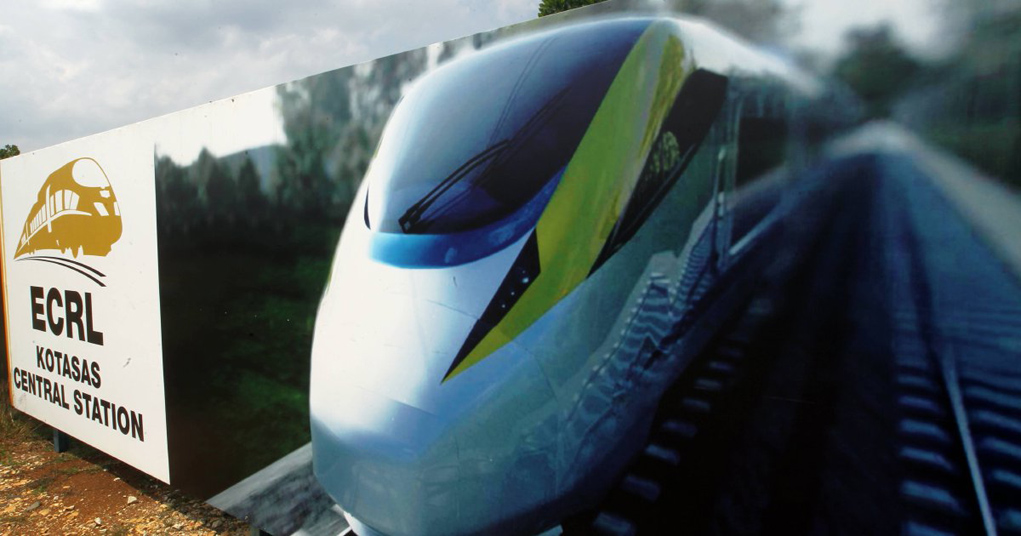
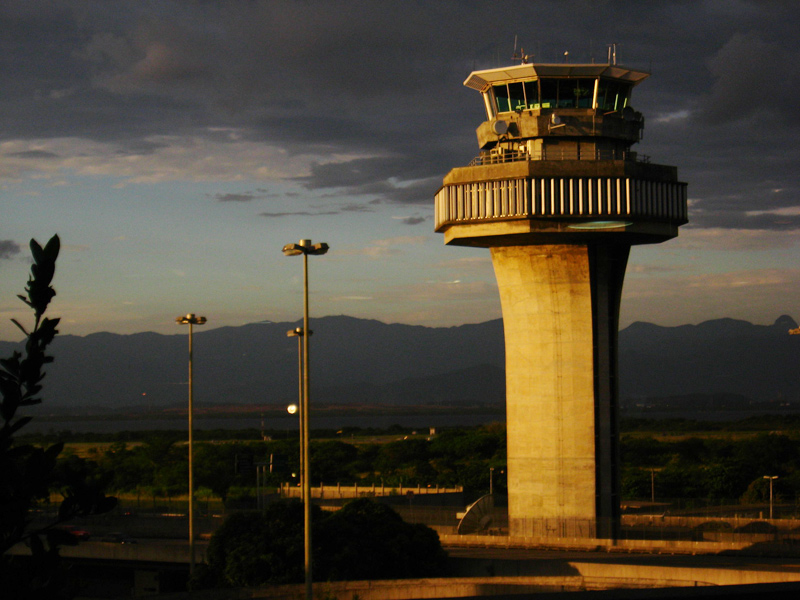
 609 Views
609 Views